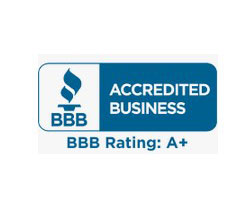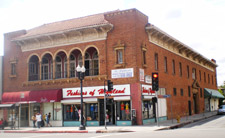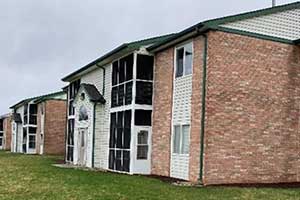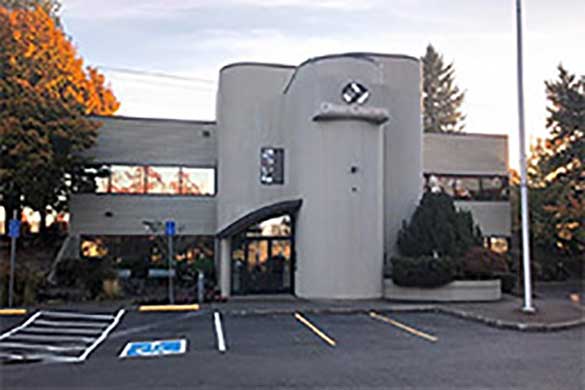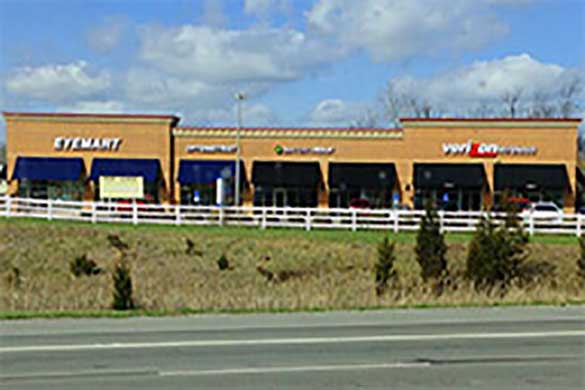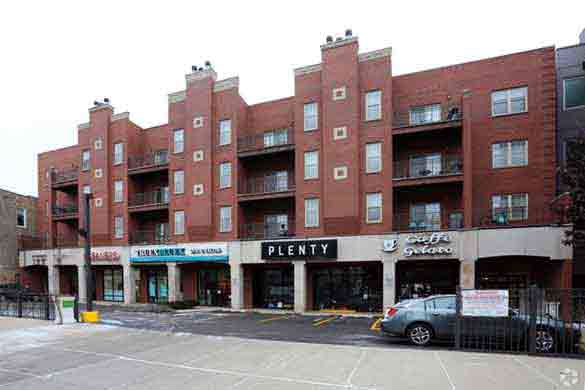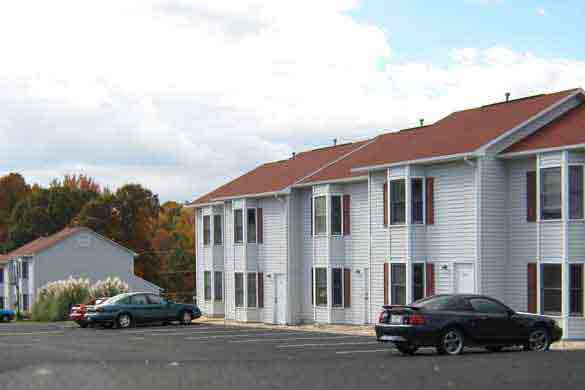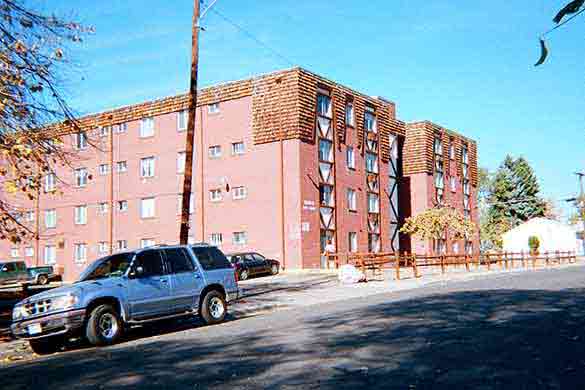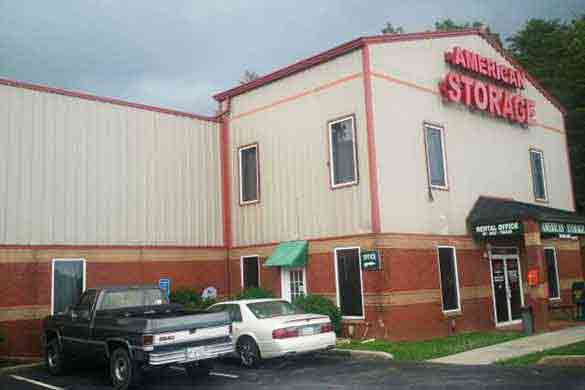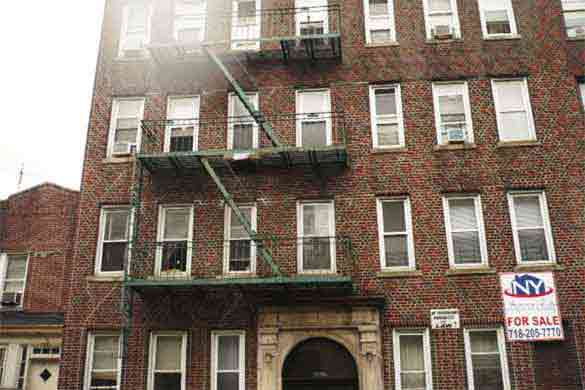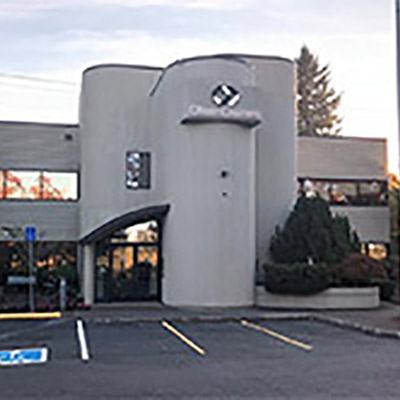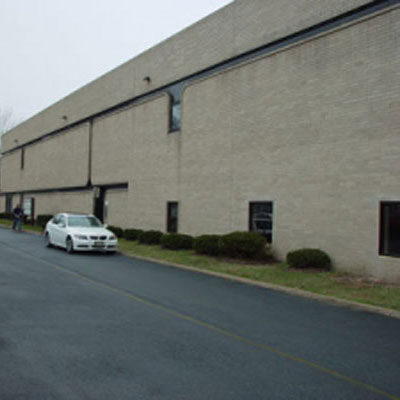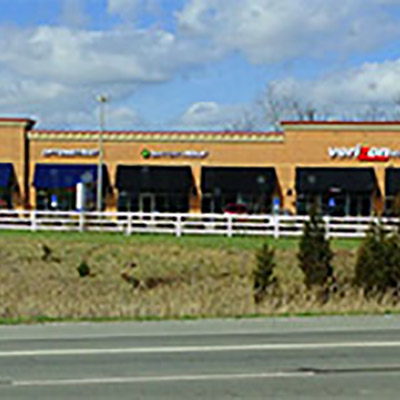California Commercial Mortgage Rates
At Select Commercial, we've built a solid reputation in the California commercial mortgage sector, offering tailored solutions for a variety of CA commercial properties across the state, with loans starting at $1,500,000. As experts in commercial real estate financing, we also understand the increasing demand for California apartment loans. Whether you're interested in multifamily units or exploring other commercial property options, our commercial mortgage rates page gives a detailed look at the best rates available across the 48 states. Discover what’s going on with California commercial mortgage rates in early 2025?.
California Commercial Mortgage Rates - updated 12/22/25
| Loans Over $1,500,000 | Get Free Quote | ||
|---|---|---|---|
| Loan Product | Rate* | LTV | |
| Multifamily | 5.18% | Up to 80% | |
| Commercial Real Estate Loan | 6.13% | Up to 75% | |
| Single Tenant Lease | 5.73% | Up to 75% | |
| Business Real Estate Loan | 5.93% | Up to 90% | |
California Commercial Mortgage Benefits
CA commercial mortgage rates start as low as 5.18% (as of December 22nd, 2025)
• A commercial mortgage broker with over 30 years of lending experience
• No upfront application or processing fees
• Simplified application process
• Up to 80% LTV on multi family , 75% on commercial (90% with SBA)
• Terms and amortizations up to 30 years
• Loans for purchase and refinance, including cash-out
• 24 hour written pre-approvals with no cost and no obligation
Our Reviews
Some commercial mortgage lenders lock rates at application, some lenders lock rates at commitment, while others lock rates prior to closing. We are currently in the midst of an increasing rate environment. Rates quoted at application may increase dramatically during the loan application progress, if not locked. It is very important to understand your lender’s procedure upfront to avoid potential confusion.
In order for a commercial mortgage lender to issue a firm loan approval, they will want to understand the financial condition of the borrower, as well as the fundamentals of the property. The borrower will be expected to supply his personal financial statement showing total net worth and liquidity. He will also need to provide a schedule of real estate owned demonstrating experience managing similar properties. Lastly, the borrower’s credit scores will needed. For the subject property, lenders will look closely at the current rent roll, operating statements showing income and expenses, copies of all leases, and other pertinent property information.
Commercial mortgage rates are determined by many different factors, including property type, location of the property, loan-to-value ratio, debt service coverage ratio, debt yield, borrower’s net worth, liquidity, credit rating and level of experience. Commercial mortgage lenders look at all of these factors to determine the riskiness of the loan before setting rates. Loans with the lowest risk profile will get the best commercial mortgage rates. As the potential risk increases, commercial mortgage rates usually increase.
Commercial mortgage loans are viewed differently by lenders than residential loans. Home loan lenders look strictly at the borrower’s income and credit in order to qualify. Commercial mortgage lenders look at the subject property’s rent roll, operating statements, and other factors to determine the cash flow or net income potential. Very strong (low risk) commercial mortgage loans might be priced lower than home loans, while weaker performing properties (higher risk) might be priced higher.
Most commercial mortgage loans today are fixed for 5, 7, or 10 years and come with a 25-30 year amortization schedule. Loans can be recourse (personal guarantee) or non-recourse (no personal guarantee). Commercial mortgage loans typically carry prepayment penalties, whereas residential home loans usually do not. Specific terms will be determined by your lender’s underwriting team after your application is reviewed.
Commercial mortgage lenders typically lend up to 75-80% on an apartment purchase (down payment of 20-25% necessary). On other types of commercial property, commercial mortgage lenders will typically lend up to 70-75% (down payment of 25-30% necessary). An exception is for owner occupied business real estate (such as a business owner buying his own property). Owner/users may qualify for up to 90% LTV financing.
Select Commercial is a leading commercial real estate loan provider. We have excellent commercial real estate loan products and options available for owners and purchasers of commercial real estate. While we lend across the entire continental United States, we are able to give our best commercial mortgage rates and loan programs to certain areas that we feel are strong markets. California is one of the states that we consider to be a premium market and we actively look to originate good quality loans here for our clients. As an experienced commercial mortgage professional, with over 30 years of lending experience, we have many sources of capital to choose from when placing a commercial mortgage request with a lender. Having many lenders to choose from gives us advantages over any one individual source. Finding the lender that fits the needs of each client is what we do best. In the end, you get the best rate and terms available. If you are looking to obtain a commercial real estate loan, don't hesitate to contact us. There are many reasons why our customers like doing business with Select Commercial. We have a simplified application process and we do not charge any upfront application or processing fees. We typically offer 24-hour pre-approvals with no-cost and no-obligation. Our long term fixed rates are excellent, and we look to close within 45 days of application. Our staff is professional and knowledgeable, and we look forward to working with you on your next commercial mortgage transaction.
Commercial Real Estate Recent Closings
California Office Commercial Real Estate Loans: Preparing for 2025 in a Shifting Market
As we approach 2025, California's office rental market is evolving to meet the needs of businesses navigating hybrid work models and shifting economic conditions. For companies looking to secure prime office spaces, commercial real estate loans have become a critical tool to ensure they can adapt and thrive in this dynamic environment.
Adapting to Hybrid Work Models
Hybrid work continues to reshape office space requirements. Some businesses are downsizing, while others are opting for flexible environments that support both in-person collaboration and remote operations. With the assistance of commercial real estate financing, companies can invest in customized spaces that reflect their unique needs.
Shifts in Market Trends and Opportunities
As of late 2024, California's office real estate market is undergoing significant changes, with notable variations across different regions:
Statewide Overview:
- The national office vacancy rate reached 17.7% in the third quarter of 2024, reflecting a slight increase from earlier in the year. Compared to the same period in 2023, this rate has risen by 0.9 percentage points, indicating broader challenges in office space utilization.
Regional Insights:
- Los Angeles: Office vacancies climbed to 24.8% in Q3 2024, up from the previous quarter, with an overall year-over-year increase of 2.3 percentage points. These trends highlight the impact of businesses downsizing and reevaluating their office needs in a post-pandemic economy.
- San Francisco: The city's vacancy rate surged to 27.7% by October 2024, marking a substantial year-over-year increase. This reflects shifts in corporate strategies and adjustments to hybrid work models, which have influenced demand for traditional office spaces.
- Sacramento: The vacancy rate rose to 21.3% in Q3 2024, reaching its highest level in over a decade. This spike was largely driven by a significant reduction in office space use by state agencies, freeing up nearly 278,000 square feet in key locations.
These statistics emphasize the evolving challenges and opportunities within California's office real estate sector. Businesses navigating these changes can find strategic investment opportunities, particularly in areas where vacancy rates offer negotiating power. By leveraging commercial real estate loans, companies can secure properties that position them for long-term success.
Modern Amenities as a Competitive Edge
Today's office spaces are designed to do more than house employees; they aim to enhance productivity and satisfaction through amenities like fitness centers, advanced tech infrastructure, and collaborative work areas. Investing in these premium spaces often requires tailored financial solutions, and Select Commercial Funding specializes in providing the expertise and resources businesses need to access these opportunities.
Partnering for Success
The future of office rentals in California is marked by innovation and adaptability. With the right financial partner, businesses can secure the resources necessary to thrive. Select Commercial Funding is a trusted commercial mortgage broker, offering expertise in commercial real estate loans and tailored solutions to help clients achieve their goals.
Contact Select Commercial today to learn more about how we can support your real estate financing needs and set you up for success in 2025.
California Industrial Commercial Real Estate Loans: Preparing for 2025 in a Shifting Market
In California's ever-evolving industrial real estate sector, 2024 has brought both challenges and opportunities. As businesses and investors prepare for 2025, the focus on strategic commercial real estate loans has never been more critical. Select Commercial Funding, a trusted name in the industry, is helping businesses navigate these changes with tailored financing solutions that meet the unique demands of the California market.
Market Dynamics and Industrial Real Estate Trends
California's industrial real estate market has seen a noticeable shift in 2024. Nationwide vacancy rates have reached their highest levels since 2014, reflecting a cooldown in e-commerce and a surge in new supply. Despite these trends, demand for industrial spaces like warehouses and data centers remains steady, especially in high-demand regions like the Inland Empire.
As of the third quarter of 2024, California's industrial real estate market displayed varied trends across its major regions, reflecting changing dynamics in supply and demand:
Statewide Overview:
- Nationwide, the industrial vacancy rate rose slightly by 19 basis points to 6.6% in Q3 2024, marking the smallest quarterly increase observed since late 2022.
Regional Insights:
- San Francisco Bay Area: The industrial vacancy rate in this region stood at 5.1% during Q3 2024, with a net absorption of negative 1.8 million square feet, indicating a decline in demand.
- Orange County: Industrial vacancy rates continued their upward trend for the seventh consecutive quarter, reaching 3.6% in Q3 2024. This marks a noticeable increase compared to both the previous quarter and the same period last year.
- East Bay Oakland: Oakland's industrial market recorded a vacancy rate of 6.3% by the end of Q3 2024, an increase from the previous quarter, alongside a net absorption of negative 1.4 million square feet.
- Sacramento: The industrial market in Sacramento saw a vacancy rate of 5.1% in Q3 2024, with negative net absorption totaling 782,000 square feet.
- San Jose: The industrial vacancy rate in San Jose experienced a slight rise, reaching 7.58% in Q3 2024 compared to 7.55% in the previous quarter.
Overall, the data reflects a gradual upward trend in industrial vacancy rates across California's markets, driven by shifts in tenant demand and space availability. For businesses looking to expand or invest, now is the time to consider competitive commercial real estate financing options. Select Commercial Funding specializes in helping businesses secure financing for properties that meet their operational needs while offering long-term growth potential.
Financing Solutions for Emerging Opportunities
As industrial real estate becomes more specialized, the need for flexible and targeted commercial mortgage loans has grown. Facilities such as data centers and manufacturing units often require customized financing plans due to their unique specifications and high costs. Select Commercial Funding, a leading commercial mortgage broker, works closely with clients to structure loans that align with their strategic goals and financial resources.
Whether it's a logistics hub or a state-of-the-art manufacturing plant, having access to the right financing can help businesses stay ahead of the curve in California's competitive industrial market.
Positioning for Growth in 2025
Looking ahead to 2025, businesses must adopt forward-thinking strategies to thrive in the industrial real estate sector. This includes:
- Optimizing Investments: Diversifying property portfolios to include high-demand asset classes like warehouses and neighborhood retail spaces.
- Leveraging Expert Support: Partnering with experienced firms like Select Commercial Funding ensures access to the best commercial mortgage loans and insights for navigating market complexities.
- Focusing on Sustainability: Incorporating energy-efficient features into industrial properties not only enhances appeal but also aligns with regulatory trends and tenant expectations.
Why Select Commercial Funding?
Select Commercial Funding has a proven track record as a leading commercial loan broker, providing businesses with the tools they need to succeed in a shifting market. Whether it's securing financing for a large-scale industrial development or refinancing existing properties, their expertise in commercial mortgages ensures that clients can make informed decisions tailored to their goals.
Prepare your business for the opportunities ahead by partnering with Select Commercial Funding. With a deep understanding of the California industrial real estate market and a commitment to delivering results, they are your trusted ally in achieving success in 2025 and beyond.
California Retail Commercial Real Estate Loans: Preparing for 2025 in a Shifting Market
In 2024, California's retail commercial real estate (CRE) sector has demonstrated resilience amid evolving consumer behaviors and economic shifts. As businesses strategize for 2025, understanding current trends and securing appropriate financing are crucial for success.
Stability in Retail Fundamentals
The retail real estate market in California has shown stability, with availability rates expected to decrease by 20 basis points, reaching 4.6% by the end of 2024. This positive trend is attributed to a prolonged scarcity of new construction over recent years, leading to steady demand for existing retail spaces.
Emergence of Mixed-Use Developments
Innovative mixed-use developments are gaining traction, exemplified by projects like Thrive Living's 800-unit apartment complex in Los Angeles, which incorporates a ground-floor Costco. This model reflects a strategic shift towards integrating retail within residential settings to meet consumer demand for convenience.
Adaptive Reuse of Retail Spaces
The trend of repurposing existing retail properties is on the rise, with nearly 21% of California real estate owners planning to redevelop spaces for alternative uses such as multifamily, industrial, or other retail purposes over the next three years. This approach addresses changing market demands and optimizes underutilized properties.
Retail Market Trends as of Q3 2024
As of the third quarter of 2024, California's retail real estate market displayed mixed trends across various regions, reflecting a dynamic landscape:
Statewide Trends:
- Retail vacancy rates across the U.S. remained consistent at 4.1% during the first three quarters of 2024, indicating limited availability in the sector.
Regional Insights:
- San Jose: Retail vacancies experienced a slight uptick, increasing to 4.58% in Q3 2024 from 4.41% in the previous quarter.
- Sacramento: Retail vacancy rates in Sacramento saw a modest decline, decreasing to 5.8% in Q3 2024 from 5.9% in Q2.
- San Francisco: The retail sector in San Francisco has faced steady challenges, with the vacancy rate climbing to a record high of 7.9% in Q3 2024.
- Los Angeles: Retail vacancies in Los Angeles stood at 8.6% as of Q2 2024, reflecting a 15% year-over-year increase.
Navigating Financing in a Shifting Market
Securing favorable financing remains a challenge due to higher interest rates and economic uncertainties. However, the retail sector is expected to perform steadily, with unchanging vacancy rates and moderate rent growth for neighborhood and community shopping centers. Businesses can leverage this stability by partnering with experienced commercial mortgage brokers to obtain tailored financing solutions that align with their strategic objectives.
Positioning for 2025
As California's retail CRE market continues to evolve, businesses should focus on:
- Strategic Location Selection: Investing in areas with strong consumer demand and growth potential to maximize returns.
- Flexible Space Utilization: Designing adaptable retail spaces that can accommodate various uses, enhancing long-term viability.
- Sustainable Practices: Incorporating energy-efficient features to reduce operational costs and meet regulatory requirements.
By staying informed about market trends and securing appropriate financing, businesses can effectively navigate the shifting retail landscape and position themselves for success in 2025 and beyond.
California Hotel Commercial Real Estate Loans: Preparing for 2025 in a Shifting Market
In 2024, California's hotel commercial real estate sector is navigating a complex landscape shaped by evolving travel patterns, economic factors, and emerging trends. As businesses prepare for 2025, understanding these dynamics and securing appropriate financing are crucial for success.
Market Dynamics and Challenges
The U.S. hotel industry is facing several headwinds, including increased competition from alternative lodging options such as short-term rentals and glamping, an economic slowdown, and geopolitical tensions. These factors are expected to result in modest revenue per available room (RevPAR) growth of approximately 3.0% in 2024, supported by slight increases in occupancy and average daily rates (ADR). Urban hotels are anticipated to outperform, while resort properties may experience slower growth.
Hotel Market Trends as of Q3 2024
As of the third quarter of 2024, California's hotel and hospitality sector has exhibited the following key performance metrics:
Statewide Overview:
- Occupancy Rates: In September 2024, California's hotel occupancy rate was 71%, reflecting a 1% year-over-year increase. Year-to-date figures indicate that room demand remained flat compared to the previous year and was down 8% from 2019 levels through September. (Source: Visit California)
- Average Daily Rate (ADR): The state's ADR stood at $195 in September 2024, showing no significant change from the same period in the previous year. (Source: Visit California)
- Revenue Per Available Room (RevPAR): RevPAR was $138 in September 2024, consistent with figures from September 2023. (Source: Visit California)
National Context:
- Occupancy Rates: Overall U.S. hotel occupancy decreased by 0.8% year-over-year in Q3 2024, attributed to a 0.1% drop in demand and a 0.6% increase in supply. (Source: CBRE)
- ADR and RevPAR: A 0.6% increase in ADR was offset by the decline in occupancy, leading to a 0.2% decrease in RevPAR nationally during the same period. (Source: CBRE)
These statistics indicate a relatively stable hotel and hospitality market in California, with slight improvements in occupancy rates, while ADR and RevPAR have remained steady compared to the previous year.
Investment Landscape
Investment activity in the hotel sector is expected to remain subdued due to heightened risks to RevPAR growth, anticipated declines in profits, deferred capital expenditures, and higher capital costs. However, trophy assets, newer select-service properties in markets with modest supply growth, and hotels focused on group travel in areas with a solid mix of business and leisure demand are likely to attract investor interest.
Technological Integration
In regions like Silicon Valley and the Bay Area, the integration of technology into the hospitality experience is more pronounced than ever. From smart rooms to AI-driven concierge services, the hotel industry is innovating to meet the expectations of tech-savvy travelers. Securing financing for these tech-driven transformations is essential for businesses aiming to offer next-generation experiences.
Strategic Investments in a Stabilizing Market
By mid-2024, the hospitality market fundamentals in California have shown signs of stabilization. This presents an opportune moment for businesses to invest. With the aid of California hotel commercial real estate loans, businesses can secure properties at competitive rates, ensuring a sustainable return on investment.
Beyond Accommodation: Crafting Experiences
Modern hotels in California are not just about providing a place to sleep; they're about crafting memorable experiences, from wellness retreats to cultural immersions. Financing such multifaceted spaces requires a deep understanding of the industry, something that specialized commercial real estate loans offer.
Preparing for 2025
As California's hotel commercial real estate market continues to evolve, businesses should focus on:
- Strategic Location Selection: Investing in areas with strong consumer demand and growth potential to maximize returns.
- Flexible Space Utilization: Designing adaptable hotel spaces that can accommodate various uses, enhancing long-term viability.
- Sustainable Practices: Incorporating energy-efficient features to reduce operational costs and meet regulatory requirements.
By staying informed about market trends and securing appropriate financing, businesses can effectively navigate the shifting hospitality landscape and position themselves for success in 2025 and beyond.
Commercial Real Estate Loan Types
Apartment Loans
Apartment loans, often called multifamily loans, have consistently been a significant part of our business. We specialize in obtaining apartment loans and mixed-use mortgages.1031 Exchange Financing
1031 exchange financing helps investors complete tax-deferred exchanges when selling one investment property and purchasing another.Bowling Alley Mortgage Loan
Bowling alley mortgage loans finance the acquisition, refinance, or improvement of bowling alley properties.Bridge Commercial Mortgage Loan
Bridge commercial mortgage loans provide short-term financing until a property is stabilized or ready for permanent financing.Campground Mortgage Loan
Campground mortgage loans offer financing for RV parks and campgrounds, including acquisitions, refinances, and upgrades.Car Wash Loan
Car wash loans finance self-service, in-bay automatic, and full-service car wash properties.CMBS Mortgage
CMBS mortgages provide long-term, fixed-rate CMBS financing for income-producing commercial properties.Dental Practice Loan
Dental practice loans offer funding to acquire, expand, or refinance a dental practice, with or without real estate.Gas Station Loan
Gas station loans finance the purchase or refinance of branded and unbranded gas stations and convenience stores.Hotel Mortgage
Hotel mortgages provide financing for flagged and independent hotels, including purchases, refinances, and renovations.Industrial Property Loans
Industrial property loans cover warehouses, manufacturing facilities, flex space, and distribution properties.Investment Property Loans
Investment property loans finance non-owner-occupied residential and commercial properties held for investment.Manufacturing Plant Mortgage Loan
Manufacturing plant mortgage loans provide funding to purchase or refinance manufacturing and production facilities.Marina Mortgage Loan
Marina mortgage loans offer financing for marinas, docks, and related waterfront operations.Medical Practice Acquisition
Medical practice acquisition loans provide funding to acquire an existing medical practice, including goodwill and equipment.Mobile Home Park Financing
Mobile home park financing offers loans for manufactured housing communities and mobile home parks.Motel Mortgage
Motel mortgages provide financing for the purchase or refinance of independent and franchised motels.NNN Lease Financing
NNN lease financing offers loans secured by single-tenant properties leased on triple-net terms.No Income Check Commercial Mortgage Loan
No income check commercial mortgage loans are asset-based programs that rely primarily on property cash flow and equity rather than traditional income documentation.Office Building Loans
Office building loans finance multi-tenant and single-tenant office buildings for acquisition or refinance.Restaurant Mortgage Loan
Restaurant mortgage loans provide financing for the purchase or refinance of restaurant and food service properties.Self Employed Commercial Mortgage
Self employed commercial mortgages offer flexible underwriting for self-employed borrowers who need alternative documentation options.Self Storage Financing
Self storage financing provides loans for self storage facilities, including acquisitions, refinances, and expansions.Special Use Loans
Special use loans provide customized financing for unique or non-standard commercial property types.Retail Building Loan
Retail building loans offer financing for shopping centers, strip malls, and stand-alone retail buildings.Underlying Co-Op Financing
Underlying co-op financing provides loans secured by the underlying mortgage of cooperative apartment buildings.Our company has over 30 years of experience in the commercial real estate market and offers multiple capital sources for these commercial real estate loans, including: national banks, regional and local banks, insurance companies, Wall Street conduit lenders, credit unions, agency lenders (such as Fannie Mae and Freddie Mac), and private lenders. Whether you are purchasing or refinancing, we have the right solutions available. We will entertain loan requests of all sizes, beginning at $1,500,000. Click here to get started with a free loan quote.
What areas of California does Select Commercial provide financing?
Select Commercial provides commercial real estate loans throughout the state of California including but not limited to the areas below.
• Pomona • Pasadena • Placer • Plumas • Rancho Cucamonga • Riverside
• Riverside • Sacramento
• Salinas • San Benito • San Bernardino • San Diego • San Francisco • San Joaquin • San Jose • San Luis Obispo • San Mateo • Santa Ana • Santa Barbara • Santa Clara • Santa Clarita • Santa Cruz • Santa Rosa • Shasta • Sierra • Simi Valley • Siskiyou • Solano • Sonoma • Stanislaus • Stockton
• Sunnyvale • Sutter • Tehama • Thousand Oaks • Torrance • Trinity • Tulare • Tuolumne • Ventura • Vallejo • Yolo • Yuba

